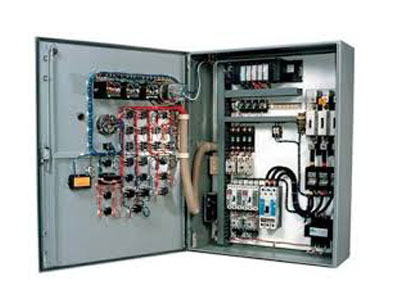What Is The Difference Between SCADA And DCS Panels?
Key Takeaway
SCADA (Supervisory Control and Data Acquisition) and DCS (Distributed Control System) panels are both used for plant monitoring and control, but they serve different purposes. SCADA systems focus on data collection, monitoring, and analysis, making them ideal for operations that require real-time data from various locations. SCADA is event-driven, meaning it responds to specific triggers or changes in value, enabling fast processing and open communication protocols.
DCS systems, on the other hand, are designed for more complex process control. They manage processes in a sequential manner and are better suited for large-scale operations involving multiple units that need centralized control. DCS panels come with integrated operator interface software and tag databases, offering in-depth control functions and enhanced system integration. While SCADA excels in data analysis, DCS focuses on maintaining continuous and precise process control.
Introduction to SCADA and DCS Systems
SCADA systems are designed for centralized control and data acquisition over vast and often geographically dispersed systems. They gather real-time data from various remote devices, such as PLCs and sensors, and present it to operators via a centralized Human-Machine Interface (HMI). SCADA systems are ideal for overseeing systems that span large distances, such as power grids, water distribution networks, and oil pipelines.
DCS systems, on the other hand, are specifically tailored for controlling complex industrial processes within a single site or facility. They distribute control and data processing across multiple controllers, making them more suitable for continuous, real-time process control within industries like manufacturing, chemical processing, and refining. DCS systems provide a seamless integration of control and data management across different sections of the facility.

Architectural Differences in SCADA and DCS
The architecture of SCADA systems is typically hierarchical and centralized. It uses a master control system that connects to remote devices through communication protocols like Ethernet, Modbus, or OPC. This setup allows operators to monitor and control multiple systems or facilities from a single location. The architecture supports a range of devices from different manufacturers, making SCADA systems highly adaptable and scalable.
In contrast, DCS systems have a more distributed architecture, with multiple controllers and I/O modules spread throughout the plant. Each section of the plant is managed by its own local controller that communicates with the central control system, creating a network of distributed control. This design enhances real-time responsiveness and fault tolerance. The DCS architecture is inherently built to handle complex processes and integrate various subsystems, making it more suitable for process control where synchronization and safety are paramount.
Application Areas of SCADA vs. DCS
SCADA systems excel in industries where data collection from a wide range of remote locations is necessary. Applications include:
Power generation and distribution: Managing power plants and electrical grids.
Oil and gas: Monitoring pipelines, refining operations, and offshore platforms.
Water treatment: Supervising the treatment, storage, and distribution of water.
DCS systems are found in industries that require highly integrated, continuous process control. Common applications include:
Chemical and petrochemical plants: Controlling complex chemical reactions and refining processes.
Manufacturing: Managing assembly lines and production processes that demand tight integration and real-time adjustments.
Pharmaceuticals: Ensuring consistent production conditions for high-quality outputs.
Scalability and Flexibility in Each System
SCADA systems are known for their flexibility and scalability. They are designed to monitor and control systems that may expand or change over time. Adding new remote units or integrating devices from different manufacturers is straightforward, making SCADA ideal for industries that may need to scale their operations.
DCS systems, while robust, have a more structured approach to scalability. The system is built to handle complex operations within a plant, but scaling can be more involved due to the tightly integrated nature of the network. Modifying a DCS system requires careful planning and may involve additional hardware and software integration to ensure seamless operation across distributed controllers.
Performance Comparison in Industrial Automation
SCADA systems offer excellent performance in terms of data visualization, remote monitoring, and the ability to manage multiple locations. They allow operators to access real-time data, analyze trends, and make decisions that enhance the efficiency and reliability of operations. However, because they rely on centralized control, there may be limitations in handling real-time process control for highly time-sensitive tasks.
DCS systems, with their distributed architecture, excel in real-time control and the ability to manage continuous processes. They provide higher reliability and redundancy, which is crucial for operations that require uninterrupted performance. The decentralized nature of DCS ensures that a failure in one part of the system doesn’t affect the entire process, making it ideal for mission-critical operations.
Conclusion
Both SCADA and DCS control panels have their unique strengths and are tailored for specific types of industrial applications. SCADA systems are better suited for centralized control and monitoring of large, dispersed processes, while DCS systems are ideal for continuous process control in a single location. Understanding these differences is essential for choosing the right system to meet the operational needs and ensure optimal performance in industrial environments.

